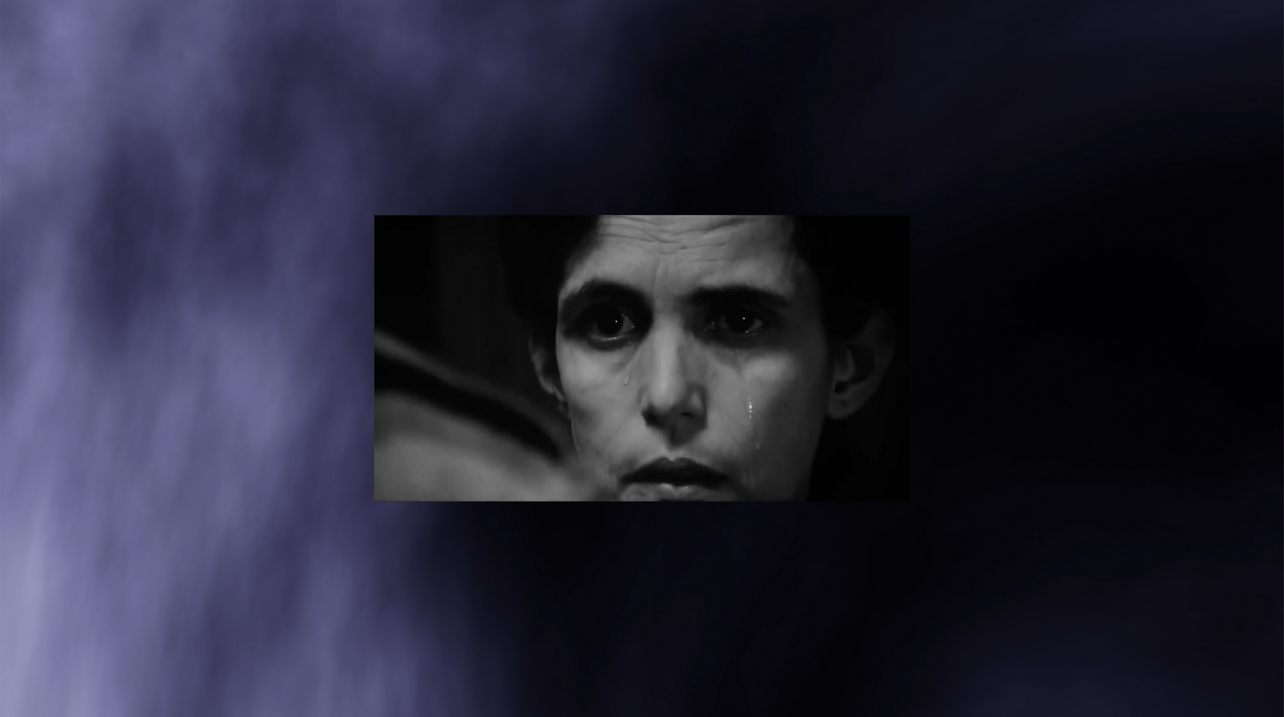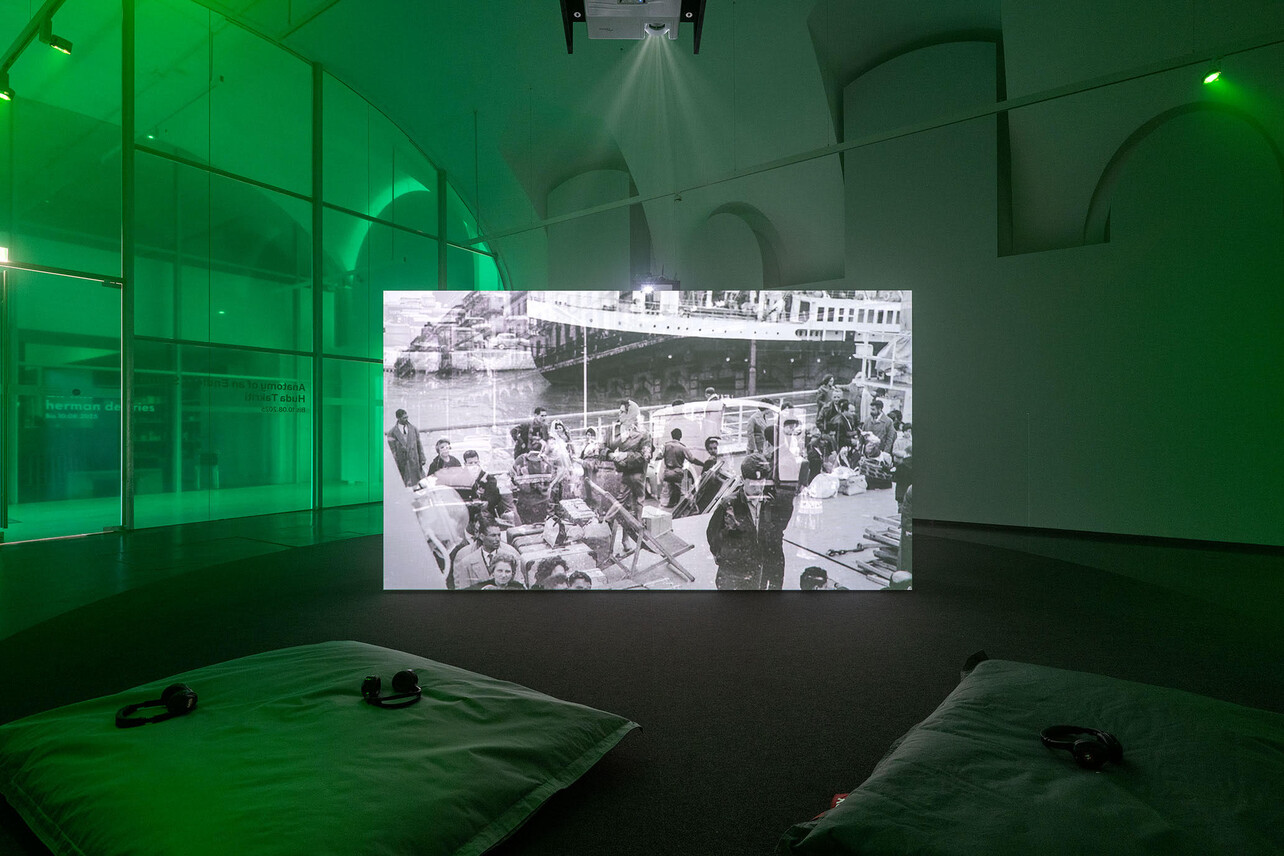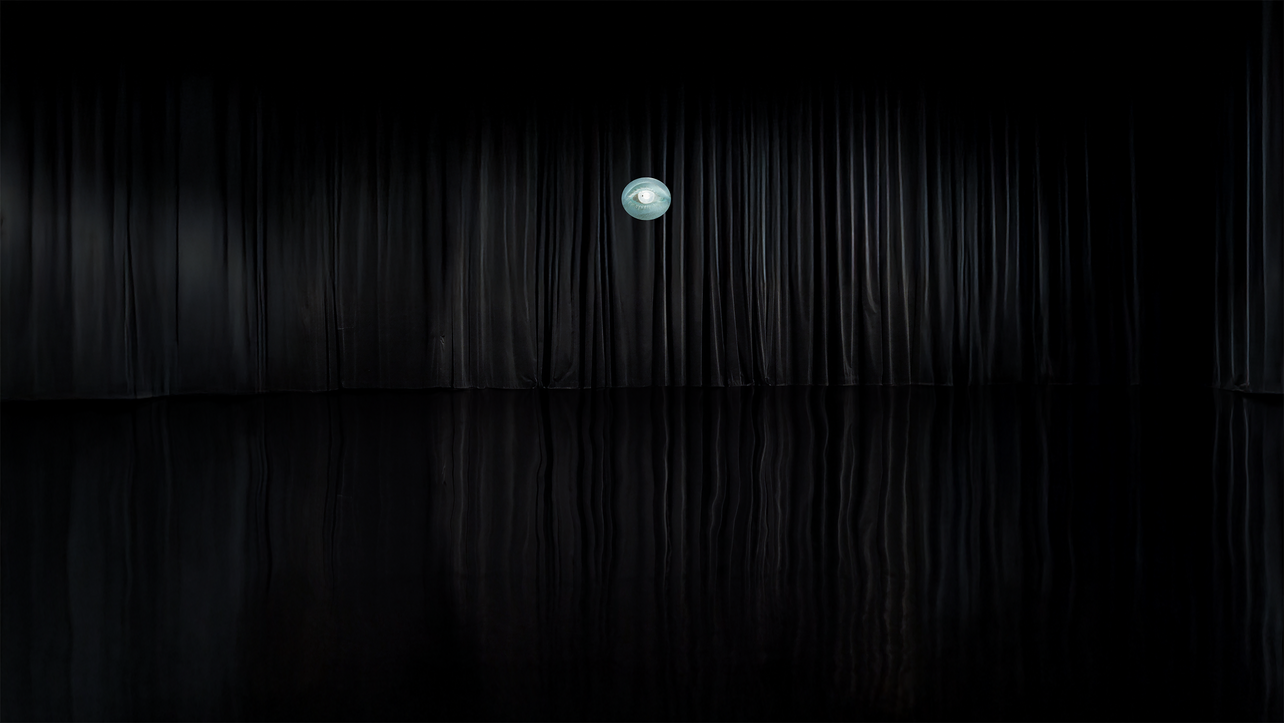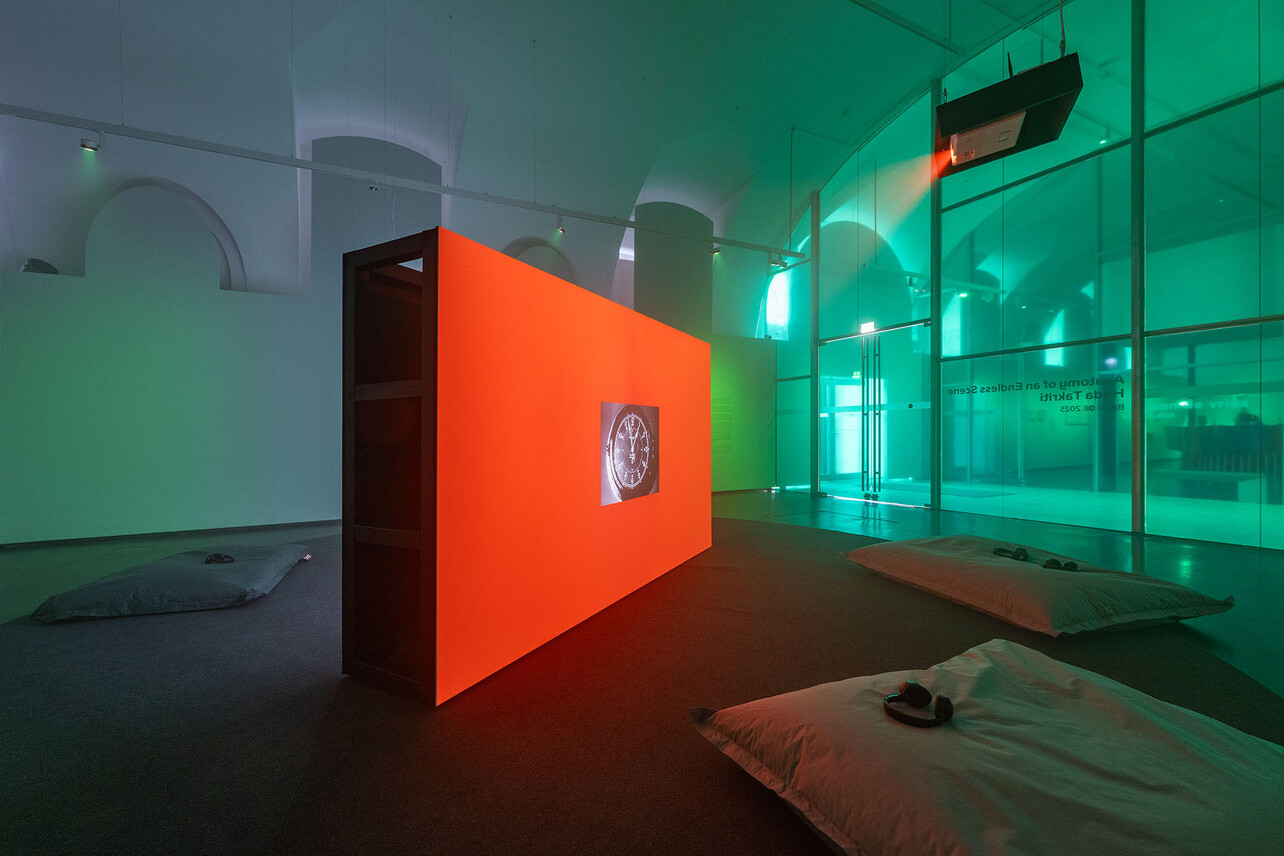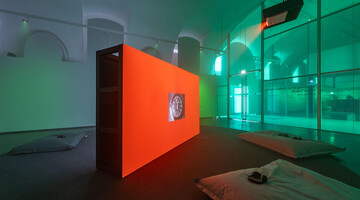
Exhibition Review: Anatomy of an Endless Scene – Huda Takriti
Staging the Archive: Memory, Erasure, and the Moving Image
Huda Takriti’s Anatomy of an Endless Scene, currently on view at MQ Freiraum in Vienna, presents a richly layered inquiry into the politics of memory, identity, and historiography. Curated with conceptual precision by Verena Kaspar-Eisert, the exhibition features two video works that foreground the complexity and elasticity of historical narratives, with particular attention to the legacies and afterlives of the Algerian Revolution (1954–1962).¹ Through an interdisciplinary and affective visual language, Takriti interrogates how collective memory is constructed, mediated, and contested, thereby destabilizing dominant historiographical frameworks and inviting viewers to engage in acts of critical remembrance. Through her methodologically rigorous and sensorially immersive approach, Takriti offers not only a meditation on the Algerian Revolution but also a critical inquiry into how histories are performed, suppressed, and re-imagined.At the heart of the exhibition are two video works that exemplify Takriti’s deep commitment to process-oriented artistic research. Her practice is grounded in collage not merely as a visual technique, but as a conceptual framework. Collage becomes a means of disassembling and reassembling the archive, allowing for the coexistence of multiple temporalities and perspectives. This is particularly evident in her use of “image within image” constructions, which destabilize linear readings and instead evoke a palimpsestic vision of history.
Sound, Lighting, Atmosphere and Spatial Choreography
From the moment of entry, the exhibition space is configured to foster a meditative and immersive encounter with the works. The spatial design is not merely a backdrop but operates as an integral component of the exhibition’s conceptual architecture. Subtle lighting, deliberate spatial intervals, and the acoustic calibration of the room work in concert to cultivate an atmosphere of introspection. This spatial arrangement slows down the pace of viewing, encouraging an embodied, almost durational engagement with the video installations. The scenography carefully avoids overdetermination, instead allowing for an open-ended dialogue between viewer and artwork.
Sound in Takriti’s videos is not supplementary but central. She is intentional with her soundscapes, using silence and ambient textures to heighten the psychological and emotional resonance of the imagery. These are not background scores but dramaturgical elements that mold the viewer’s interpretive space. Similarly, the lighting specifically the use of green hues creates a focused atmosphere, subtly guiding the viewer’s emotional and cognitive orientation. Green lighting acts as a visual anchor that enhances concentration, enveloping the viewer in a contemplative state without overstating its symbolic function.
The exhibition space itself is choreographed with equal care. Comfortable couches are positioned to encourage durational viewing, embodying the artist’s belief that physical comfort can create the mental stillness required for focused engagement. The spatial decisions the distances between screens, the dim lighting and the acoustics are not neutral but ideologically charged. They facilitate immersion while resisting spectacle, inviting the audience to slow down and participate in a different mode of reception.
Artistic Methodology and Thematic Framework
Takriti’s artistic methodology is marked by a sophisticated use of archival research, found footage, and personal testimonies. This assemblage approach situates her work at the intersection of documentary and poetic abstraction, allowing her to explore questions of temporal displacement and narrative fragmentation. By recontextualizing historical material, Takriti both critiques and reclaims dominant narratives, especially those related to anti-colonial struggle and postcolonial identity formation.
Central to Anatomy of an Endless Scene is the interrogation of the mechanisms by which history is recorded and remembered. The Algerian Revolution, while serving as a historical anchor, becomes a lens through which broader issues are examined: the continuity of colonial violence, the elusiveness of national identity, and the erasure of subaltern voices. Takriti positions these themes not as static historical facts but as living, unresolved tensions that continue to shape contemporary geopolitical and cultural landscapes.
Takriti’s methodology operates at the intersection of the poetic and the historiographic. Her manipulation of archival material whether state records, found footage, or textual fragments treats the archive not as a fixed repository of truth, but as a performative space, a stage upon which dominant historical narratives are both enacted and contested. In Anatomy of an Endless Scene, the artist explicitly conceptualizes the archive as a theater stage, foregrounding the performative nature of state historiography. This metaphor becomes literalized in the spatial and narrative structure of the film, where the "eye"—a recurring visual and narrative motif breaks the fourth wall to directly address the viewer, implicating them in the act of witnessing.
This eye, as both character and gaze, becomes a surrogate for the viewer, and also a symbol of the archive’s surveillance and selective memory. In this way, Takriti renders the historical not only visible but self-aware. Her cinematic choices such as slow pacing, intentional lighting, and carefully sculpted soundscapes further this effect. The auditory dimension is particularly noteworthy: Takriti models the sound not just for atmosphere but to ask what the words themselves would sound like in their delivery and resonance. The voice becomes a sculptural element, shaping the viewer’s reception of the work.
Historical Focus: Algeria and the Politics of Erasure
Central to the exhibition is the Algerian Revolution, a formative moment in the history of anti-colonial struggle and pan-Arab thought. Takriti engages with this period not as a closed historical chapter but as a reverberating presence. She is especially concerned with the erasure of female freedom fighters from official historical accounts, pointing to the ways in which the archive is often a site of absence rather than presence. Her work refuses to reproduce violence, opting instead for a strategy of care. This refusal is not a disavowal of historical trauma but an ethical stance against its aestheticisation.
By refusing to depict violence, Takriti foregrounds the subtle operations of historical erasure, allowing viewers to feel the weight of what is missing. This absence becomes a critical presence in the work, challenging viewers to consider how memory is shaped by both what is remembered and what is excluded.
The Politics of Process and Possibility
What distinguishes Takriti’s practice is her deep investment in artistic process. Anatomy of an Endless Scene is a work still in progress a fact that the artist embraces as a declaration of method. She approaches her materials slowly and immersively, allowing them to unfold over time. This openness to process is itself a political gesture, resisting the pressures of closure and resolution often imposed by institutional exhibition-making.
Her iterative methodology opens up new possibilities for the moving image as a space of speculative historiography. It is not simply that her films represent historical content, they enact the ongoing negotiation of historical meaning. The unfinished nature of the project speaks profoundly to the artist’s commitment to development, reflexivity, and resistance to premature conclusions.
Aesthetic Strategy and Ethical Engagement
Takriti is acutely aware of how aesthetic choices can either reinforce or complicate the content they seek to engage. In this sense, her work is a continuous balancing act, between abstraction and documentation, presence and absence, narrative and disruption. Rather than offering a linear story, she constructs constellations of meaning that invite viewers to make connections across fragments. Her films do not “teach” history in a didactic sense; instead, they create the conditions for historical thinking.
By spatialising memory, layering visual and aural textures, and invoking the archive as a performative space, Huda Takriti crafts an artistic language that is at once rigorous and deeply affective. Her exhibition ultimately asks: what does it mean to remember a revolution? Who gets to speak in the archive? And how might art serve as a site for reimagining what has been silenced?
Conclusion
Anatomy of an Endless Scene stands as a compelling testament to the unfinished nature of history and the politics of its representation. Takriti’s interdisciplinary approach: melding video, collage, performance, and archival practice offers a critical yet poetic re-engagement with the past. For scholars, curators, and audiences invested in contemporary art, memory studies, and postcolonial critique, this exhibition is not only timely but necessary. It insists that history is not a stable narrative to be consumed, but a stage upon which the struggle for meaning must be continuously rehearsed.
Written by: Kamogelo Walaza, MQ Curator-in-Residence
